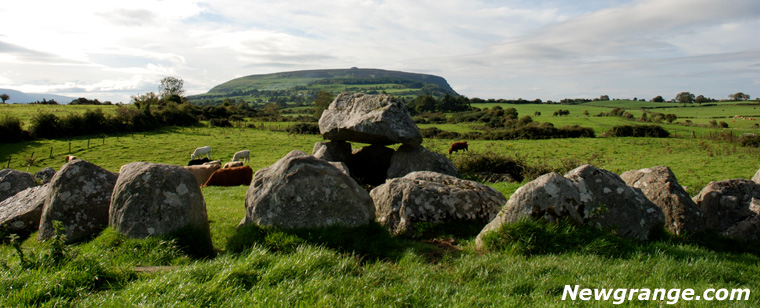Carrowmore | Board of Works welcomes decision
An article in The Irish Times, 18 February 1989The Supreme Court decision on Carrowmore was welcomed yesterday by the Board of Works, the statutory authority with responsibility for ancient monuments, and by the Professor of Archaeology at University College, Dublin, Senator George Eogan. A spokesman for the Board of Works said it had never been happy with Sligo County Council's proposal to locate a refuse dump beside the Carrowmore site, and had noted with great interest the references in the judgement to the relationships between the monuments on the site and the surrounding area.
The Supreme Court has held that there is a wider public interest involved than the more confined interest of the county council, in regard to the location of the dump site, she said. Senator Eogan who gave evidence for the local residents in the 1983 High Court hearing, said he was very pleased by the judgment. I hope now the court case is behind us that the State will take proper conservation measures at Carrowmore, which is one of the great Neolithic graveyards of Europe. They could start by filling in the pits and tidying up the area, he said The State had already bought some land in the Carrowmore area and it should continue that policy, with a view to creating a Nation Archaeological Park there, Senator Eogan added.
Professor Michael Herity, Dean of the Faculty of Celtic Studies at UCD, said he was delighted with the Supreme Court's decision. One of the most interesting features of the judgment was the fact that the judges had given explicit recognition to the idea of an Architectural landscape, he said. Professor Herity added that the reference in the judgement to a fallow area surrounding a national monument indicated that the legal boundary of a national monument site was not the edge of the monument itself but included an additional area which would allow an observer to stand back and view the monument. Alderman Declan Bree, who voted against the Carrowmore dump site proposal when it first came before Sligo County Council in February, 1983, said yesterday that county council staff who advised in favour of siting the dump at Carrowmore, and Fianna Fail and Fine Gael councillors who voted in favour of the proposal, had brought the county council to the verge of bankruptcy. Senior staff whose advice had proved ill-founded should now consider their position and their future with the council, he said.
The Carrowmore site, which is about 5 miles west of Sligo town, covers several hundred acres and is regarded by archaeologists as the largest and, possibly, the oldest megalithic site in Western Europe. Part of the site was excavated between 1977 and 1982 by Dr. Goren Burenhult, of Stockholm University, who has dated it to about 4,000 BC, considerably older than the Boyne Valley tombs Dr. Burenhult also gave evidence in the High Court in 1983. In 1983 Sligo County Council proposed locating a domestic rubbish dump on a quarry site about 100 yards from an area of the cemetery containing six megalithic tombs and divided from it by a road. The council's decision was contested by five local residents in the High Court, in Dublin in late 1983, and the High Court ruled that the county council could proceed with its plans, on certain conditions. The local resident appealed to the Supreme Court, which heard the case for two days last November. Counsel for the residents claimed that the council's proposals were a material contravention of its own Development Plan and that the council had ignored the Office of Public Works, its own advisory body and the views of local people, contrary to its legal obligations.
Boyne Valley Private Day Tour
 Immerse yourself in the rich heritage and culture of the Boyne Valley with our full-day private tours.
Visit Newgrange World Heritage site, explore the Hill of Slane, where Saint Patrick famously lit the Paschal fire.
Discover the Hill of Tara, the ancient seat of power for the High Kings of Ireland.
Book Now
Immerse yourself in the rich heritage and culture of the Boyne Valley with our full-day private tours.
Visit Newgrange World Heritage site, explore the Hill of Slane, where Saint Patrick famously lit the Paschal fire.
Discover the Hill of Tara, the ancient seat of power for the High Kings of Ireland.
Book Now


